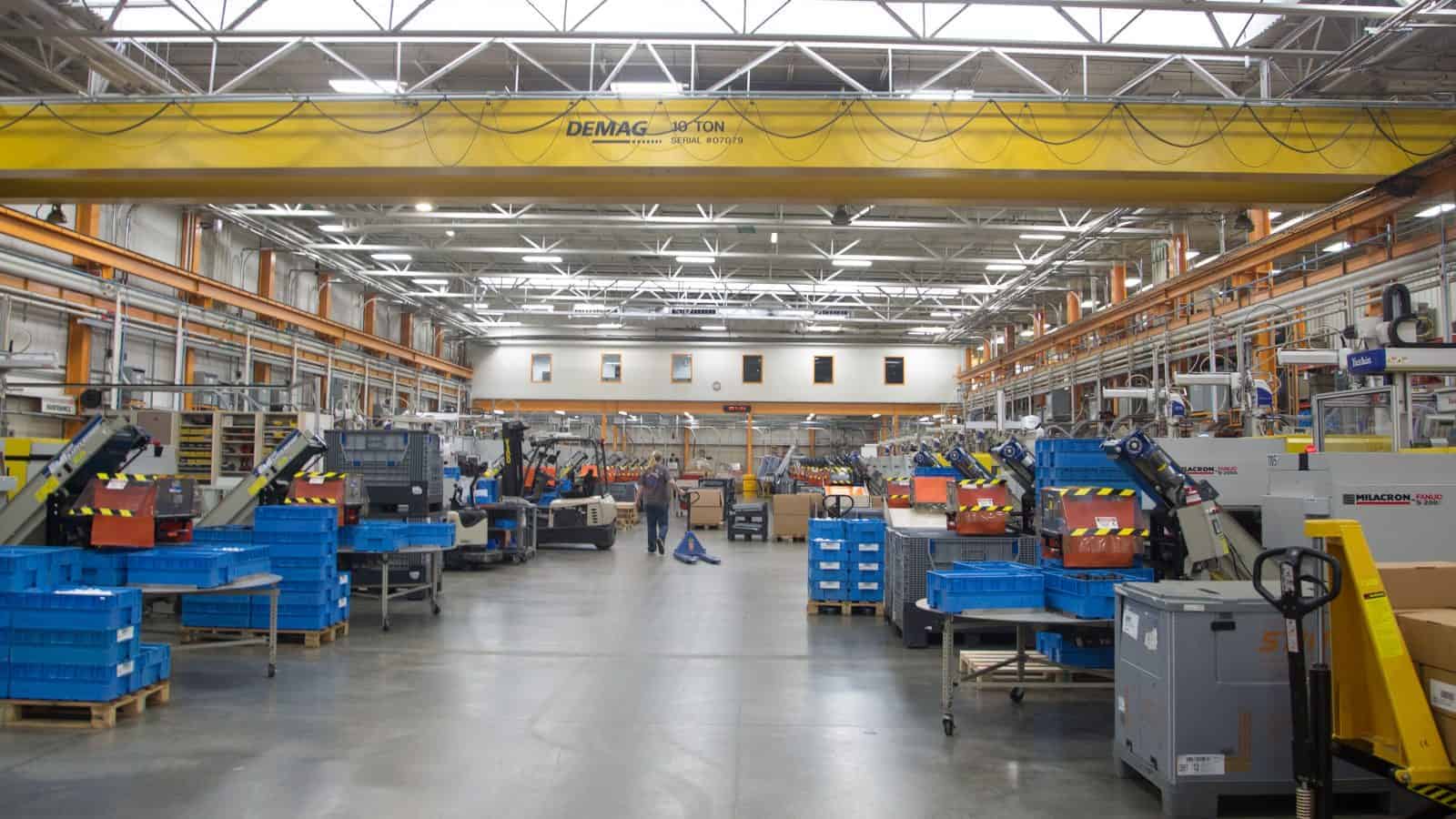Timmons to Congress: Maintain Momentum with Tax Reform Preservation
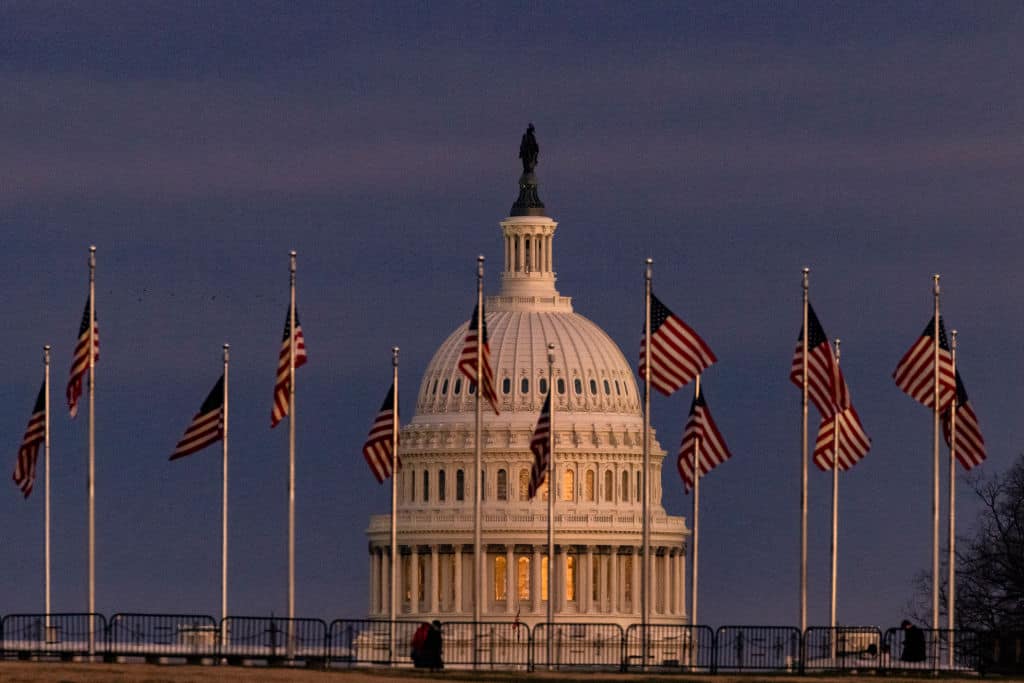
The House late Tuesday approved a Republican budget blueprint for President Trump’s tax-cut and border-security agenda (Reuters, subscription).
- NAM President and CEO Jay Timmons called the move “a historic, pivotal step to[ward] advanc[ing] a comprehensive reconciliation package that will preserve” critical pro-manufacturing tax reforms and unleash “American energy dominance.”
What’s going on: “The measure is a preliminary step to extending Trump’s 2017 tax cuts later this year,” Reuters reports. “Tuesday’s vote sent the budget resolution to the Senate, where Republicans are expected to take it up.”
- The plan—which calls for $4 trillion to $4.5 trillion in tax cuts and $1.5 trillion to $2 trillion in spending reduction over 10 years—also includes measures to increase domestic energy development and production.
Why it’s so important: Congress must capitalize on the momentum of the budget resolution’s passage by preserving the crucial tax reform measures from President Trump’s 2017 Tax Cuts and Jobs Act, Timmons continued—because “[e]very day we wait means jobs and opportunity lost.”
- “As part of the comprehensive, commonsense manufacturing strategy that America needs, protecting tax reform will strengthen our industry and our communities. It’s time to continue this momentum and act now to Make America Great for Manufacturing Again. When manufacturing wins, America wins.”
What’s next: House Speaker Mike Johnson (R-LA) has said he anticipates passing the tax, energy, border-security and defense items via reconciliation by the first week of April.
State of Manufacturing 2025: When Manufacturing Wins, America Wins
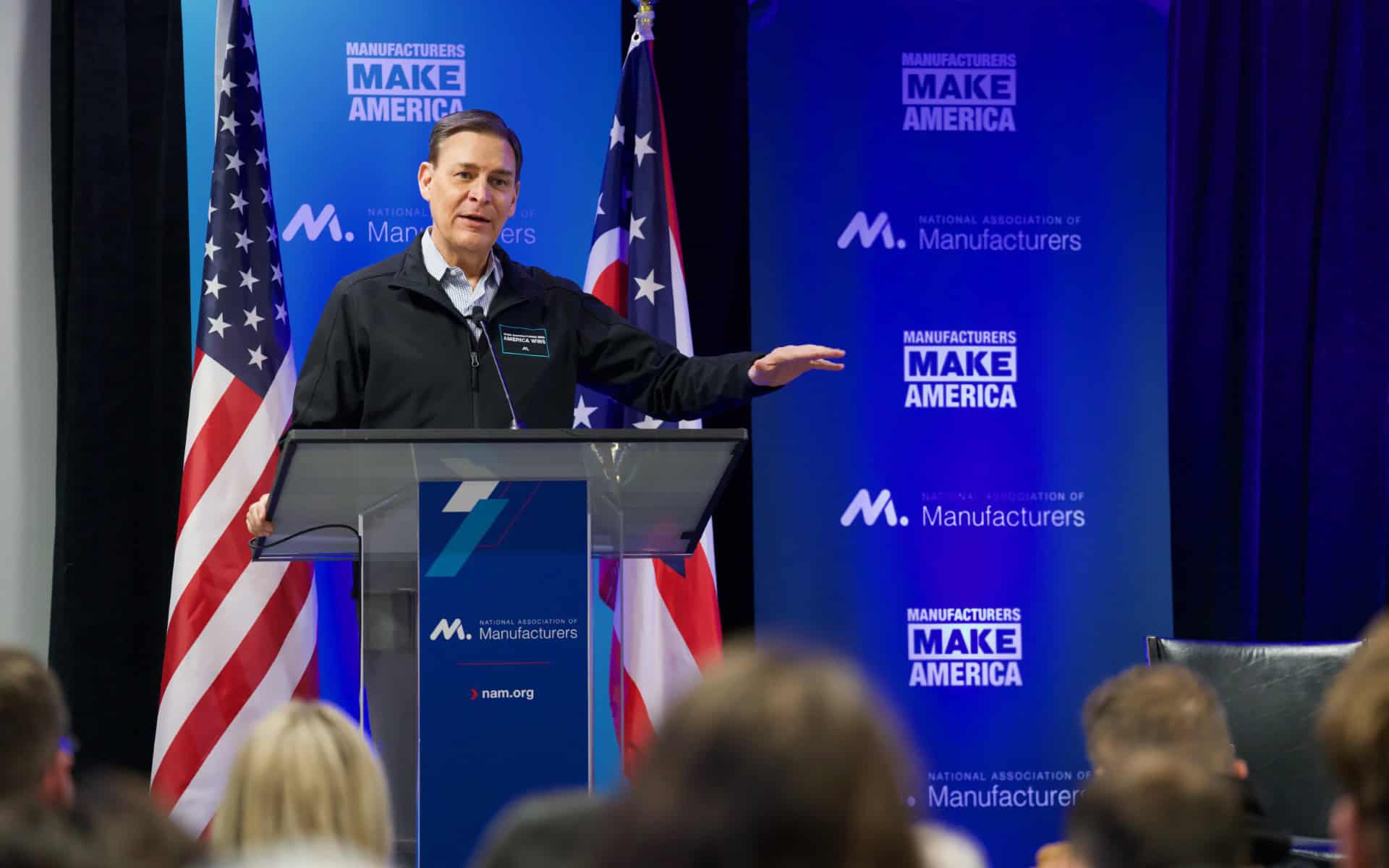
“Manufacturing in the U.S. has momentum”—and to keep it going, manufacturers will need to push, NAM President and CEO Jay Timmons said Tuesday in the NAM’s annual State of Manufacturing Address.
What’s going on: Speaking to an audience of manufacturers and congressional and state officials at Armstrong World Industries in Hilliard, Ohio, Timmons, who was joined by NAM Board Chair and Johnson & Johnson Executive Vice President and Chief Technical Operations & Risk Officer Kathy Wengel, emphasized the “defining moment” for the industry and said that for manufacturing, “what happens next really matters.”
- “Uncertainty is the enemy of investment,” he told the crowd. “Manufacturing is a capital-intensive industry. We make decisions months and years in advance. … That’s why we need certainty. We need a clear, actionable, multistep strategy from our government—one that says, ‘We want you to invest here, hire here and succeed here.’”
- Timmons’ annual speech kicked off the NAM’s 2025 Competing to Win Tour, starting with a whirlwind four-states-in-four-days tour of manufacturing facilities, schools, government offices and more.
- “In Ohio, manufacturers have thrived because our leaders have taken decisive actions to keep our industry competitive,” Ohio Manufacturers’ Association President Ryan Augsburger said at the kickoff event. But now, “manufacturers across Ohio and the nation are facing critical challenges, from tax uncertainty, project delays and workforce shortages to supply chain vulnerabilities and price pressures that threaten our ability to grow. … These issues cannot wait.”
What manufacturing needs: Certainty from the federal government should come in several forms, Timmons said, including the following:
- Preserving tax reform: The 2017 tax reforms were “rocket fuel” for manufacturing in America—but key provisions have expired and others are scheduled to sunset. Congress must bring them back and improve and extend the package. “Every day that Congress delays because of process and politics, manufacturers face rising uncertainty, delayed investments and fewer jobs,” said Timmons.
- Regulatory clarity and consistency: Manufacturers today spend a total of $350 billion just to comply with regulations. “Commonsense regulation is critical to American manufacturers to continue to innovate, to compete against foreign manufacturers and to improve the lives of American citizens,” Austin So, general counsel, head of government relations and chief sustainability officer for Armstrong World Industries, told the crowd.
- Permitting reform: President Trump’s lifting of the liquefied natural gas export permit ban was a start, but to reach our full potential as energy leader, we must require “federal agencies to make faster decisions and reduc[e] baseless litigation,” said Timmons.
- Energy dominance: “America should be the undisputed leader in energy production and innovation. But … we are seeing opportunities for energy dominance fade in the face of a permitting process that takes 80% longer than other major, developed nations,” Timmons said, adding that we must cut red tape, require federal agencies to make faster decisions and reduce meritless litigation.
- Workforce strategy: By 2033, manufacturing faces a shortfall of 1.9 million manufacturing employees, Timmons said. To fill those positions, the sector needs a “real workforce strategy,” one that includes apprenticeships, training programs and public–private partnerships.
- Commonsense trade policy: If President Trump continues to use tariffs, “we need a commonsense policy … that provides manufacturers with the certainty to invest” and “a clear runway to adjust,” according to Timmons.
State of manufacturing: “Manufacturing in the United States is moving forward,” Timmons said. “Like a press at full speed, like a production line firing on all cylinders, like the workers who show up before dawn and leave long after the job is done—manufacturing in the United States is driving us forward.” And Timmons added that now it’s time “to make America Great for Manufacturing Again.”
On the move: Following the speech, Timmons, Wengel and Augsburger joined state lawmakers, including state Sens. Kristina Roegner and Andrew Brenner, and local business leaders for a visit to the Ohio Statehouse for an event focused on the importance of tax reform for Ohio and its manufacturing sector.
- A recent NAM study found that, if key provisions of tax reform are allowed to expire, Ohio would risk losing 208,000 jobs and $18.9 billion in wages.
What’s at stake: Tax reform was transformational for Humtown Products, the Columbiana, Ohio–based family-owned sand cores and molds manufacturer, President and CEO Mark Lamoncha told the audience at the Ohio Statehouse tax event.
- “We have been at the forefront of 3D-printed manufacturing for years and have invested significantly in the machinery and equipment required, including the purchase of 3D printers—one of which can easily cost over $1 million,” he said.
- “Since the 2017 tax reform, Humtown has invested over $9 million in capital expenditures related to 3D printing and averages around $100,000 annually in R&D costs. Under the 2017 tax reform, we were able to deduct 100% of those costs, generating around $1.6 million in accelerated tax savings.”
- “That amount alone allowed us to purchase another 3D printer, fueling continued growth. That’s what tax certainty allowed us to do. But right now, that certainty is slipping away. As these provisions begin to expire, our tax burden is increasing.”
Creators Wanted: The group also fit in a stop at Columbus State Community College, which serves approximately 41,000 students, to visit with students in the semiconductor and mechanical drive classes.
The last word: The NAM recently “stood shoulder-to-shoulder with congressional leaders—delivering a clear, urgent message on tax reform” and is “driving the agenda on regulatory certainty, on energy dominance, on permitting reform, health care and workforce development,” Wengel told the audience. “The NAM is not waiting for Washington to act; we are making sure Washington acts for you, for manufacturers.”
- Added NAM Executive Vice President Erin Streeter: “The NAM is on [these issues], and we’re going to keep fighting, as we do every day with the right leaders, the right strategies and the right vision for the future.”
Why Constellium Recycles Cans—and You Should, Too
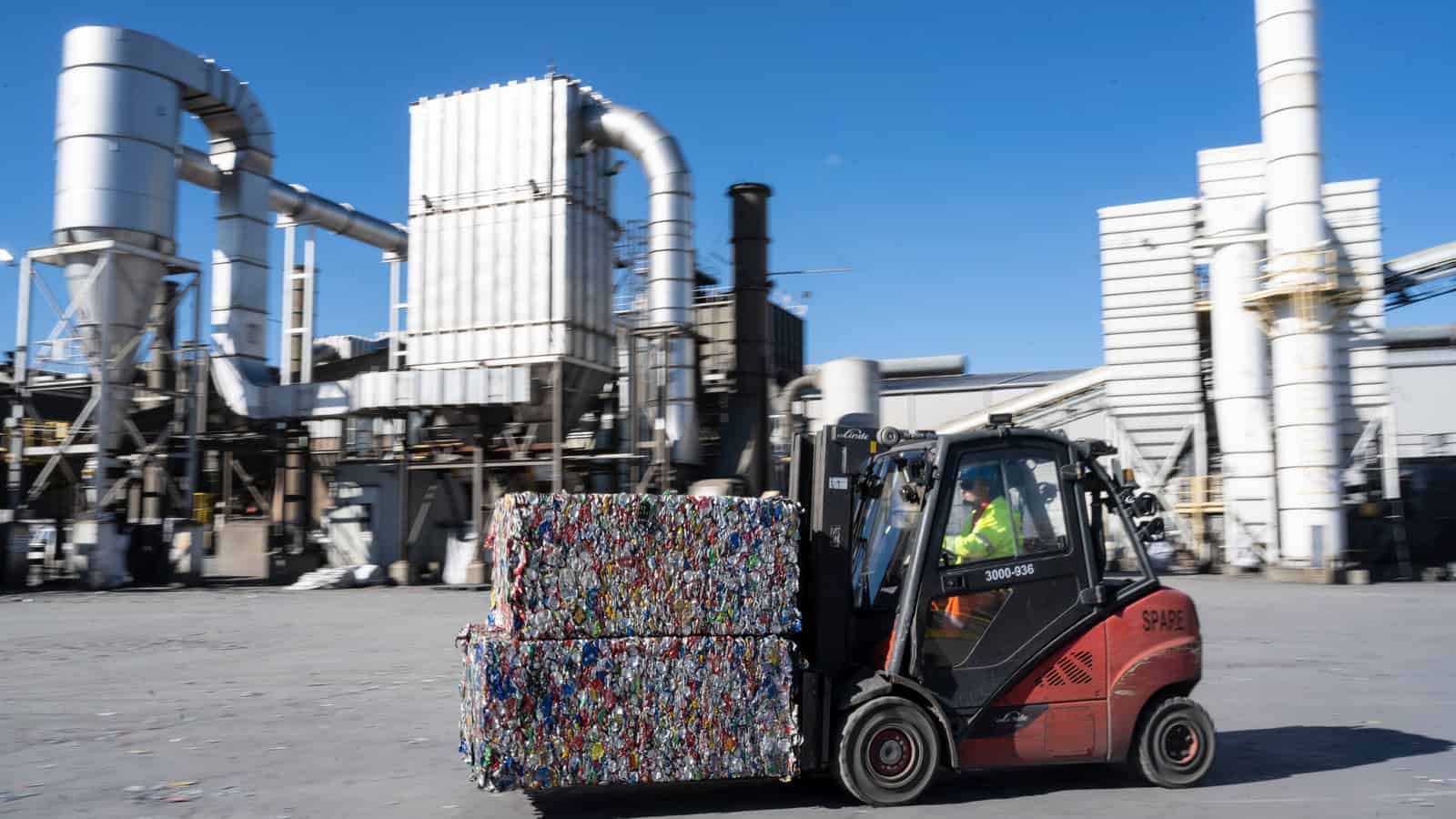
If you’re finished with that soda, Constellium hopes you’ll throw the can in the nearest recycling bin.
Use and reuse: Used cans are the mainstay of the global aluminum manufacturer and recycling giant, which owns and operates one of the world’s largest used beverage can (UBC) plants, in Muscle Shoals, Alabama. There the company recycles the equivalent of more than 20 billion cans every year.
- “We shred the cans, remove the inks and coatings and then remelt that into aluminum we can use,” said Constellium Vice President of Strategy and Business Planning for Packaging and Automotive Rolled Products Raphael Thevenin. “It’s a very circular way of using the material. Within 60 days, it’s back on the shelf” as new cans.
- Using UBCs to make new cans consumes 95% less energy than using new aluminum and is a key piece of the entire aluminum production supply chain.
Many uses: Aluminum can be recycled almost infinitely, a characteristic that gives the metal a wide variety of applications in manufacturing, as does its light weight and durability.
- In addition to canstock, Constellium’s aluminum products include auto rolled and structural products used for vehicle hoods, doors, battery enclosures and bumpers, as well as aerospace solutions, armored products for the defense industry and much more.
Why cans? UBCs are “so widely available in the U.S., and we have such a strong network of traders that we’re able to recycle them in large volumes,” Thevenin continued, adding that 10 American states give cash deposits on beverage containers. (This means that consumers can redeem their empties for cash, currently an average of 5 cents a pounds for aluminum cans.)
- However, while the U.S. consumer recycling rate for UBCs is generally higher in states with deposits, it’s on the decline nationwide, having fallen to 43% in 2023 from 45% in 2020.
- “We’re seeing a million tons of aluminum landfilled in the U.S. every year,” according to Thevenin.
What they’re doing: The increasing number of UBCs consigned to the trash means “the availability of scrap metal is declining,” Thevenin continued.
- In an effort to reverse the trend, Constellium is assessing the possibility of pushing for greater collection efforts in areas where UBC recycling is low, urging states with deposits to offer more money for exchanges and advocating the construction of more UBC-recycling infrastructure throughout the U.S.
Why it’s important: For the sake of both cost and sustainability, the U.S. must increase its stock of available aluminum scrap, Thevenin said.
- “Because we don’t have the [widespread] infrastructure in place, a lot of scrap is exported outside the U.S.,” he told us. “But if we want to make sure the products we put on the market are sustainable and profitable, we have to use as much recycled material as possible.”
- Europe recycles about 75% of its UBCs and is set to recycle about 90% by the end of the decade, according to Thevenin. “There’s a huge need to reduce the gap between the U.S. and Europe.”
- To that end, Constellium has undertaken a campaign to educate lawmakers on the need to build out U.S. infrastructure. “We need to make sure legislators are aware,” said Thevenin. “They need to understand the importance of keeping more scrap metal at home.”
Recycling cars: In Europe and North America, Constellium is actively investigating new ways to recycle aluminum from old cars efficiently, either through sorting or dismantling.
- “It’s about a 10-to-15-year cycle for car recycling, meaning that the metal comes back in the form of a new car all those years after” the initial recycling, Thevenin said. “Today the most economical way to get scrap from a car is to shred it, so you get a mix of materials and have to sort plastics, glass, metals, then nonferrous metals and steel. We’re working on developing new alloys that are more scrap tolerant and testing them on the market.”
- Constellium is also collaborating with manufacturers on creating a laser/X-ray machine that will be able to sort the different alloys in recycled cars, easing and speeding the recycling process.
- In the longer term, the company hopes to work with automotive makers to standardize the alloys used in vehicles because “when it’s mixed, it’s more difficult to sort.”
The bottom line: Aluminum recycling is a no-brainer because it’s a win for consumers, manufacturers, retailers and the environment, Thevenin went on.
- For example, once a UBC collection plant “is operational, it’s self-sustaining because [the operator] can sell to companies, such as Constellium, and then invest that revenue on more and better infrastructure.”
- When it comes to vehicles, “when car makers develop a new model, they should make sure it’s easy to recycle” because doing so will mean both cost savings and “being able to offer consumers lower-carbon products.”
SEC Guidance Rescission a Win for Manufacturers
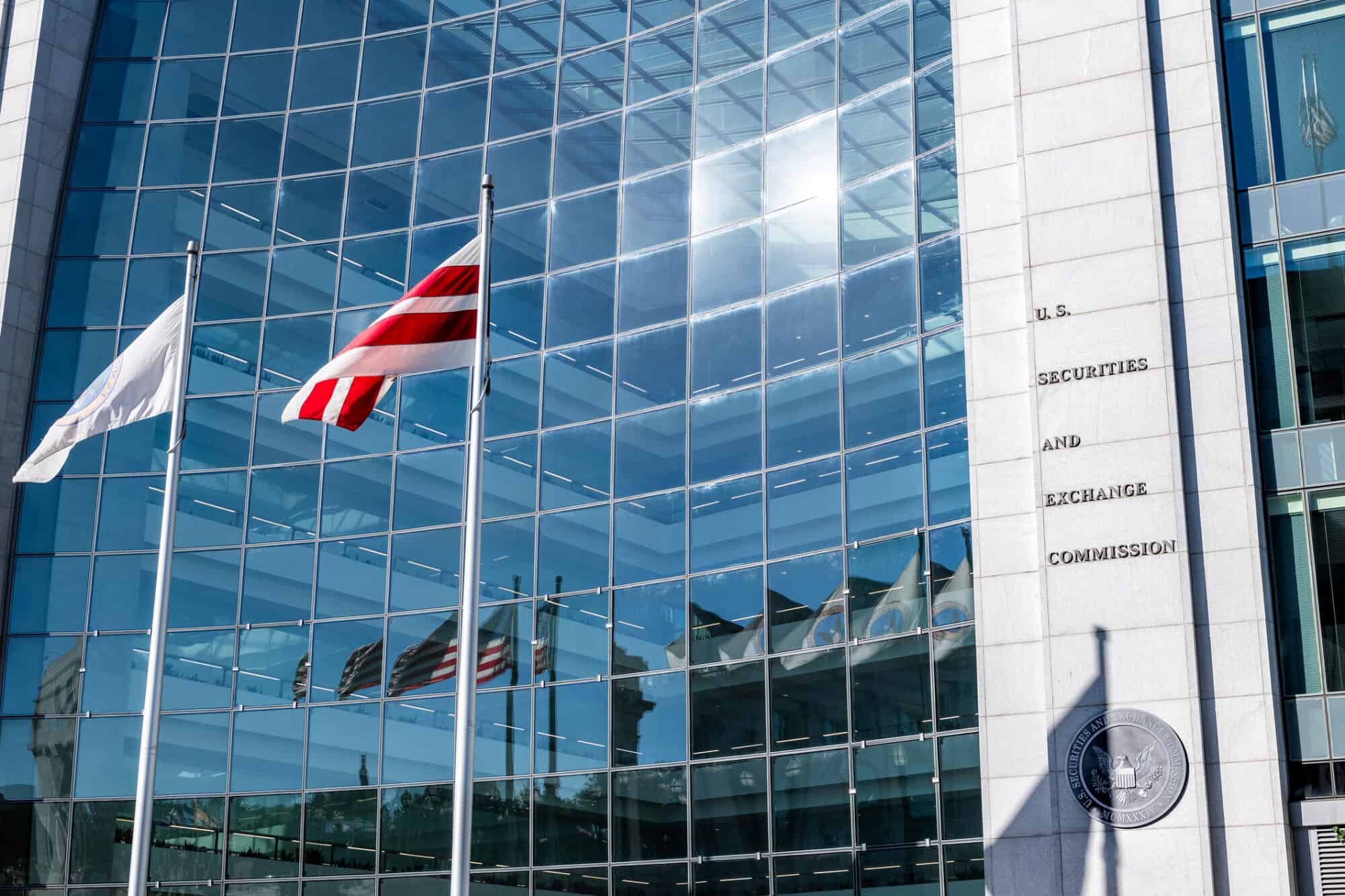
The Securities and Exchange Commission this week reversed Biden-era guidance that required publicly traded companies to include environmental and social activist shareholder proposals on proxy ballots (InvestmentNews).
What’s going on: In a move that NAM President and CEO Jay Timmons called a “depoliticiz[ation of] the proxy process” and “a crucial plank of President Trump’s pro-manufacturing deregulatory agenda,” the SEC rescinded Staff Legal Bulletin 14L, which had allowed activists to mandate consideration of social policy proposals on corporate proxy ballots—even when the policies in question were unrelated to a company’s business.
Why it’s important: SLB 14L “empowered activists at the expense of manufacturers and Main Street investors—turning the proxy ballot into a debate club, forcing businesses to court controversy and divert resources from growth and value creation,” Timmons continued.
- Replacing SLB 14L with the new SLB 14M “return[s] the SEC’s review of shareholder proposals to a company-specific process based on relevance to a business’s operations and its investors’ returns,” which will “allow manufacturers to focus on what they do best: investing for growth, creating jobs and driving the American economy.”
What we’ve been doing: Since SLB 14L was adopted in 2021, the NAM has been a leading voice calling on the SEC to reverse course.
- Most recently, the NAM, along with more than 100 manufacturing associations, outlined for President Trump more than three dozen regulatory actions the new administration could take across federal agencies to boost the manufacturing economy and end the regulatory onslaught—including rescinding SLB 14L.
- The NAM also has called on President Trump’s nominee to chair the SEC, Paul Atkins, to take steps to depoliticize the proxy process.
Manufacturers: AI Regulations Should Support Innovation and U.S. Leadership
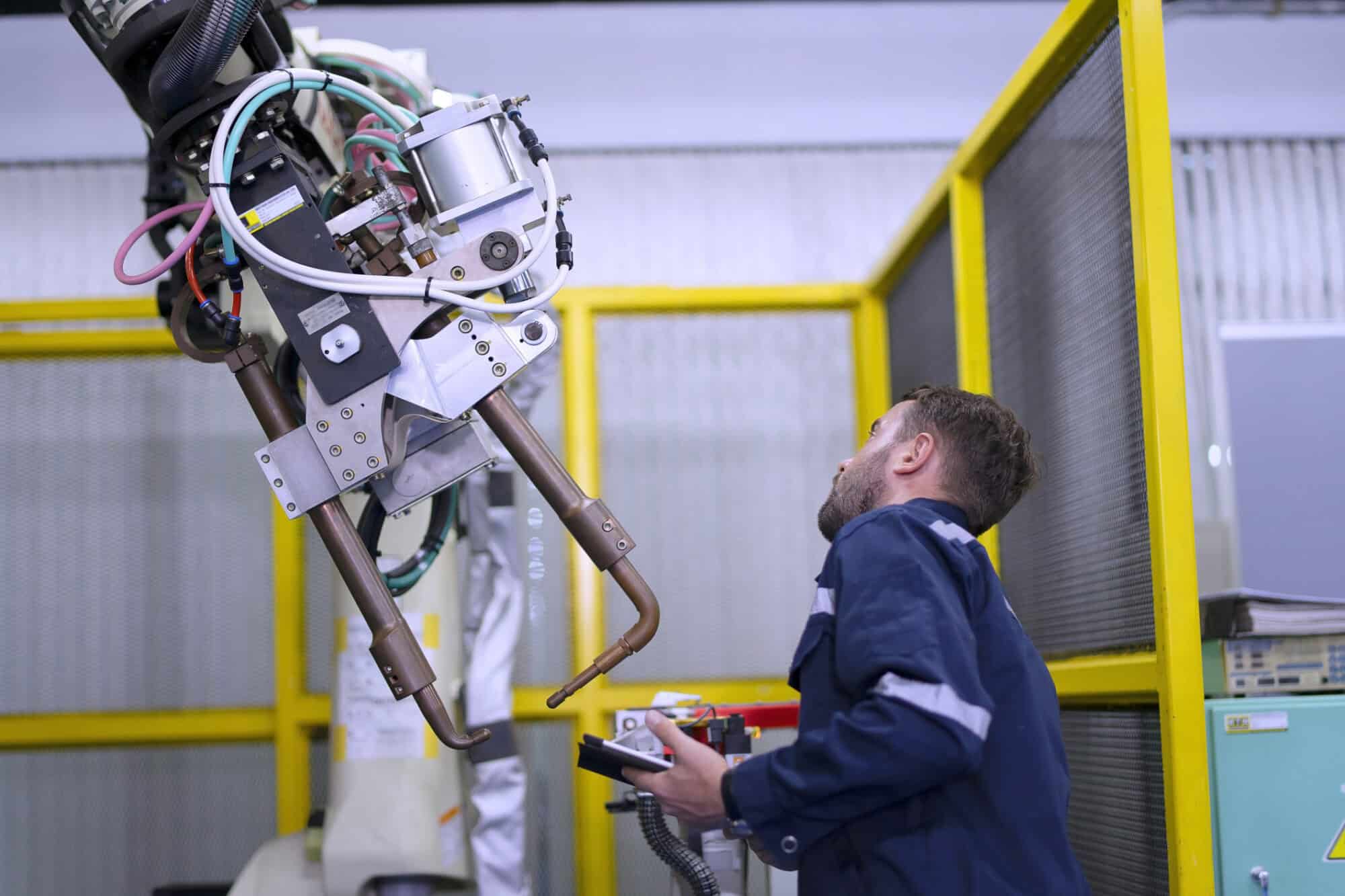
The introduction of artificial intelligence has been a boon to manufacturing, and the technology will continue to have a positive impact—as long as regulations are “right-sized,” manufacturers told Congress this week.
What’s going on: “Manufacturers are utilizing AI in myriad ways on the shop floor and throughout their operations,” the NAM told the House Subcommittee on Commerce, Manufacturing and Trade in a statement for the record at Wednesday’s hearing, where data was cited.
- “The diverse use-cases of AI in manufacturing suggest a need for a cautious regulatory approach to this groundbreaking technology: one that supports innovation and U.S. leadership in AI while providing context-specific, risk-based, right-sized rules of the road for manufacturers,” the NAM said.
- Giving testimony at the hearing, Siemens USA President and CEO and NAM Board Member Barbara Humpton discussed the many benefits of using AI in manufacturing and emphasized the need to ensure that AI regulations include “targeted” rather than “overly broad” definitions.
Industrial vs. consumer-focused AI: First, it’s important to distinguish between industrial and consumer-facing AI, Humpton told the subcommittee members.
- “Industrial AI is different from consumer AI,” she said. “Industrial AI uses controlled data from the manufacturing environment to help manufacturers create business value. Think better products, more efficient operations, a more prepared workforce. … AI will enable all companies—from startups to small and medium enterprises to industrial giants—to thrive in this new era of American manufacturing.”
- In written testimony, she added that “the core distinction of industrial AI is that it is trained on highly monitored data from sensors and machines, providing a more reliable foundation for training AI models.”
Simple, singular and targeted: Regulation of AI should be undertaken with a light touch and following a full accounting of on-the-books laws to prevent duplicative and/or contradictory rules, the NAM said.
- “[P]olicymakers should always review existing laws and regulations before enacting new ones, because most uses of AI correspond to tasks and objectives that industry has faced for a long time and that are thus highly likely to have already been addressed by existing laws and regulations,” said the NAM, which also referenced its first-of-its-kind AI report, “Working Smarter: How Manufacturers Are Using Artificial Intelligence,” released last May.
- “Similarly, policymakers must right-size any compliance burden associated with AI regulation,” the NAM continued. “The ubiquitous use of AI throughout modern manufacturing, as well as manufacturing’s dependence on innovation, underscore the need for rules that enable rather than hinder manufacturers’ development and adoption of AI systems.”
Protect without hindering: Congress “must advance industrial AI by prioritizing strong rules for digital trade, especially to include strong protections for source code and algorithms,” Humpton went on in her written testimony. “We encourage policymakers to build upon the success of previous U.S.-led efforts to protect intellectual property.”
- Legislators must also safeguard privacy and protect against baseless legal claims, the NAM said. “[I]t is … crucial that Congress take steps to maintain the privacy of personal data when utilized in AI contexts. … A federal standard should avoid a patchwork of state-level rules by fully preempting state privacy laws; it also should protect manufacturers from frivolous litigation.”
The last word: “The range and importance of uses of AI—transforming every aspect of the core of manufacturers’ operations—make it clear that AI has become integral to manufacturing,” said the NAM. “With the right federal policies, manufacturers in the U.S. will continue to devise new and exciting ways to leverage AI to lead and innovate and stay ahead of their global competitors.”
President Trump Reining in Regulatory Onslaught
SEC Rescinds Biden-Era Staff Legal Bulletin 14L; Action Depoliticizes Proxy Process
Washington, D.C. – Following the Securities and Exchange Commission’s rescission of Staff Legal Bulletin 14L, which required publicly traded manufacturers to include activists’ ESG proposals on their proxy ballots even when the issues raised were unrelated to their business, National Association of Manufacturers President and CEO Jay Timmons released the following statement.
“Manufacturers asked for regulatory certainty, and President Trump has delivered. Today’s action by the SEC under Acting Chairman Mark Uyeda’s leadership depoliticizes the proxy process—a crucial plank of President Trump’s pro-manufacturing deregulatory agenda.
“As we relayed to President Trump in December, SLB 14L empowered activists at the expense of manufacturers and Main Street investors—turning the proxy ballot into a debate club, forcing businesses to court controversy and divert resources from growth and value creation. Returning the SEC’s review of shareholder proposals to a company-specific process based on relevance to a business’s operations and its investors’ returns will allow manufacturers to focus on what they do best: investing for growth, creating jobs and driving the American economy.”
Background:
In December, the NAM, along with more than 100 manufacturing associations, sent a letter to President Trump highlighting more than three dozen regulatory actions across a wide range of agencies that would boost the manufacturing economy and put a stop to the regulatory onslaught that is costing manufacturers $350 billion each year, according to NAM research. President Trump began tackling these issues on Day 1, including by lifting the pause on liquefied natural gas exports. Today’s move by the SEC is another important step in the administration’s efforts to address burdensome regulations that are stifling manufacturing investment and growth
-NAM-
The National Association of Manufacturers is the largest manufacturing association in the United States, representing small and large manufacturers in every industrial sector and in all 50 states. Manufacturing employs nearly 13 million men and women, contributes $2.93 trillion to the U.S. economy annually and accounts for 53% of private-sector research and development. The NAM is the powerful voice of the manufacturing community and the leading advocate for a policy agenda that helps manufacturers compete in the global economy and create jobs across the United States. For more information about the NAM or to follow us on Twitter and Facebook, please visit www.nam.org.
SMM Chair: Extend Pro-Growth Tax Policy, Prioritize Permitting and Regulatory Reform

To lift much of the burden on manufacturers in the U.S., Congress must reinstate pro-growth tax measures, enact commonsense regulatory reforms and undertake comprehensive permitting reform. That was the main message of Click Bond CEO and NAM Small and Medium Manufacturers Group Chair Karl Hutter to legislators yesterday on Capitol Hill.
What’s going on: “American businesses now shoulder a staggering $3 trillion annually in regulatory costs—disproportionately impacting manufacturers,” Hutter told the House Committee on Small Business at Wednesday’s hearing.
- “Unfortunately, small companies get hit twice—with unworkable regulations that apply to them [and again with] compliance and reporting requirements that larger firms are forced to pass down. Fortunately, Congress and the Trump administration have the opportunity to reverse course.”
Rocket fuel for manufacturing: The 2017 Tax Cuts and Jobs Act “was rocket fuel for Click Bond,” said Hutter—whose Carson City, Nevada–based family business makes adhesive-bonded fasteners used by the U.S. military, commercial aviation industry and NASA.
- “The new 21% corporate tax rate allowed us to raise wages for production employees, invest in capital equipment, strengthen our employee tuition support program and accelerate the timeline for constructing a new facility. The new 20% pass-through deduction likewise empowered our suppliers and partners to reinvest in their businesses, readying them to support our growth.”
Changes for the worse: But growth was halted in 2022 and 2023, when provisions from the TCJA began to expire. Worse still: More pro-growth tax measures are due to expire at the end of this year—unless Congress intervenes.
- “It is now more expensive for Click Bond to conduct R&D, the lifeblood of both our product and process innovation,” according to Hutter. “It’s more expensive for us to purchase capital equipment, the tools that will unleash the productivity of our team. And it’s more expensive for us to finance job-creating investments such as that state-of-the-art, sustainable manufacturing facility.”
Ill effects: According to a recent study released by the NAM, nearly 6 million American jobs and more than $1 trillion of U.S. GDP will be at risk if Congress fails to act by the end of this year to preserve TCJA’s pro-manufacturing provisions.
What should be done: Manufacturers everywhere are struggling under the weight of both these provisions’ expiration and needless, out-of-date government requirements, Hutter went on. To fix these problems, he said, Congress should:
- Unwind “outdated chemicals reporting requirements that force us to look backward in time and deep into our supply chain”;
- Stop unnecessary permitting roadblocks by the Environmental Protection Agency at the state and local levels;
- Roll back expensive energy and labor mandates;
- Undertake “comprehensive permitting reform”; and
- Make permanent the pro-manufacturing tax provisions scheduled to sunset at the end of 2025 and bring back already expired provisions that boosted the sector and the U.S. economy as a whole.
The final say: “Congress has a critical opportunity to right-size the regulatory landscape, put an end to permitting delays and protect manufacturers from devastating tax increases,” Hutter concluded. “I encourage you to seize [it] … because when manufacturing wins, America wins.”
Mexico, Canada Tariffs Paused

By deciding to pause the imposition of tariffs he announced last weekend on Mexico and Canada, President Trump shows he’s hearing manufacturers “loud and clear,” the NAM said yesterday.
What’s going on: Two days after signing three separate executive orders under the International Emergency Economic Powers Act to add new levies on goods from Mexico, Canada and China, President Trump announced a one-month pause yesterday on the 25% tariff on Mexican goods and the 25% tariff on Canadian goods, including the 10% levy on energy products.
- President Trump, who had cited illegal immigration and the flow of illicit drugs into the U.S. as the impetus for the new tariffs, said Mexican President Claudia Sheinbaum agreed Monday morning to “immediately supply” 10,000 Mexican National Guard troops to the border.
- The announcement about the tariffs on goods from Canada came following an afternoon phone call between President Trump and Canadian Prime Minister Justin Trudeau.
- The 10% additional tariff applying to products from China went into effect today. In response, China announced retaliatory tariffs on certain goods imported from the U.S., as well as additional restrictions on critical minerals exports to the U.S. (The Wall Street Journal, subscription).
Staying competitive: “This decision by President Trump reflects his swift move to keep his campaign promises, balancing a commitment to aggressive border enforcement with the need to keep manufacturing in the United States competitive,” NAM Executive Vice President Erin Streeter said.
- “The NAM has worked closely with the administration, ensuring that the voices of manufacturers were heard loud and clear. Throughout the weekend, we engaged directly with senior officials, providing key data and real-world industry perspectives. Our efforts helped underscore the risks of broad-based tariffs and the importance of North American supply chains to manufacturing’s success.”
- NAM President and CEO Jay Timmons reinforced President Trump’s and the manufacturing sector’s priorities in interviews Monday with CNBC and ABC, as well as in a statement cited by the Wall Street Journal editorial board.
Certainty needed: For manufacturing in the U.S. to thrive, “we need to bring costs down,” Timmons told ABC. “And if you don’t have that, or you have the uncertainty of what’s coming next, manufacturers are reluctant to invest in new plants and equipment and facilities. They’re reluctant to hire new workers … raise wages or increase benefits. … Once we get all this sorted out, I think it will be good news for manufacturers,” but the sooner that happens, the better, he concluded.
- Timmons also discussed President Trump’s landmark 2020 U.S.–Mexico–Canada Agreement, which he said provided manufacturers with the certainty the sector requires.
- “The certainty that was provided by a negotiated and accepted trade agreement by the three countries enabled manufacturers to make investment decisions,” Timmons told CNBC. “Now we have more uncertainty about what’s ahead … but we assume that there is a rationale for this.”
Key statistics: The USMCA was vital in shifting key imports away from China to North America. According to a new NAM fact sheet:
- Fully one-third of all U.S. manufacturing inputs come from Canada and Mexico;
- Some 70% of what we import from Canada and nearly 60% of imports from Mexico are capital equipment, industrial supplies and automotive parts that go into further manufacturing in the U.S.; and
- The value of U.S. imports of manufacturing materials from North America is now three times greater than the value of materials coming from China.
The bottom line: “We appreciate the administration’s continued willingness to receive our data and manufacturing stories,” Streeter went on. “We will continue working with policymakers to ensure that future decisions support both national security and manufacturing’s success.”
NAM in the news: The NAM’s advocacy received widespread attention in the media, with Fox Business, CNBC, Bloomberg (subscription), CNN, The New York Times (subscription), Punchbowl News and a Wall Street Journal (subscription) article all highlighting its statements on the impact of tariffs on manufacturers.
- Its positions were also mentioned on “Bloomberg Surveillance,” CTV News Channel, MSNBC’s “Inside with Jen Psaki” and MSNBC’s “Morning Joe.”
The Right Way to Roll Back Regs
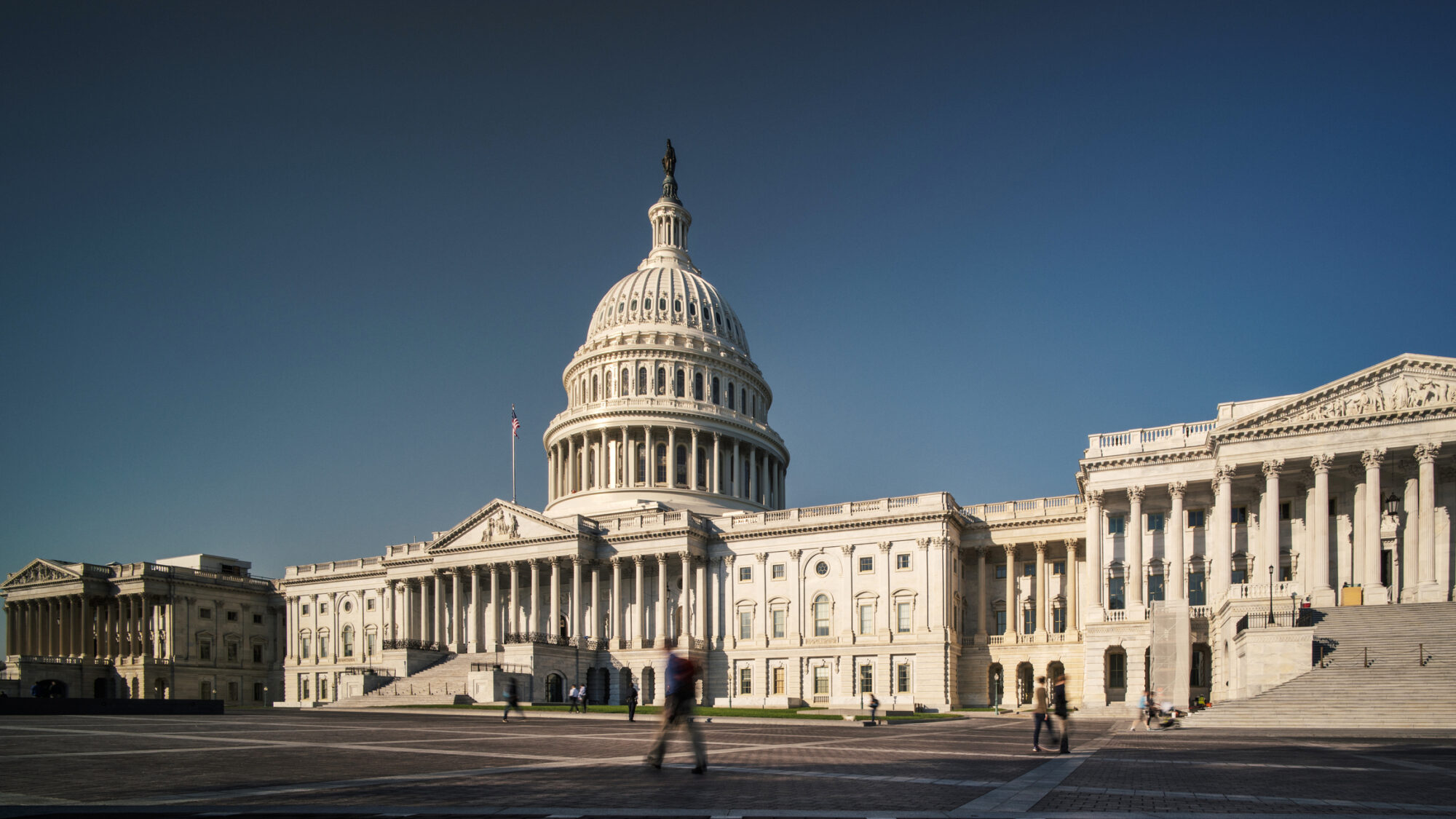
Weeks ahead of the inauguration, manufacturers provided the Trump administration with a list of several dozen regulations that should be reconsidered or rescinded to protect manufacturers’ competitiveness. This list covered everything from power plant regulations to employment rules, and some of its recommendations have already been enacted—such as the revocation of the ban on liquefied natural gas exports, which President Trump ordered on Monday.
But signing executive orders is not enough to right-size the regulatory state and remove restrictions on manufacturers’ growth—in general, final agency rules can only be amended through notice-and-comment rulemaking. What does the administration need to do to make this rollback stick?
NAM Chief Legal Officer Linda Kelly spoke to us about the policy and legal landscape that the new administration will have to navigate.
The long term: “Manufacturers need these regulatory changes to withstand the test of time—and legal scrutiny,” said Kelly. Any changes to regulatory policy will be met with legal challenges, which will delay their benefits for manufacturers.
- The new administration needs to do everything by the book and carefully follow recent pronouncements in administrative law, or its policies will not survive, Kelly warned.
- Conducting robust cost-benefit analysis, soliciting public input and tying its actions to congressional mandates will all help the administration make its policies stick, she advised.
The legal hurdles: The big developments overshadowing this round of regulatory reform include the Supreme Court’s Loper Bright decision, which freed courts from deferring to agencies’ interpretations of statutes. Instead, the courts themselves must decide on the “best reading of a statute.”
- When the Trump administration faces judges skeptical of regulatory rollbacks and no longer obligated to defer to agency interpretation, they must come armed with well-reasoned justifications supported by data and informed by the expertise of the regulated public.
- In many cases, the NAM can provide this expertise and crucial data through the rulemaking process, and the NAM Legal Center can help defend pro-manufacturing policies by intervening in litigation and filing amicus briefs.
Agencies in need: Another new requirement for the administration emerged from Ohio v. EPA, which strengthened the requirement that agencies meaningfully respond to objections to proposed rules raised during public comment periods.
- Here again, manufacturers will play a crucial role, said Kelly, offering agencies the evidence they need to support their policymaking.
The last word: “The Trump administration has to do its homework on the front end,” said Kelly, to survive the inevitable legal challenge that will follow its regulatory changes. “Manufacturers and the NAM Legal Center stand ready to help create a court-durable regulatory environment that enables innovation and prosperity.”
The Regulatory Rollback Begins
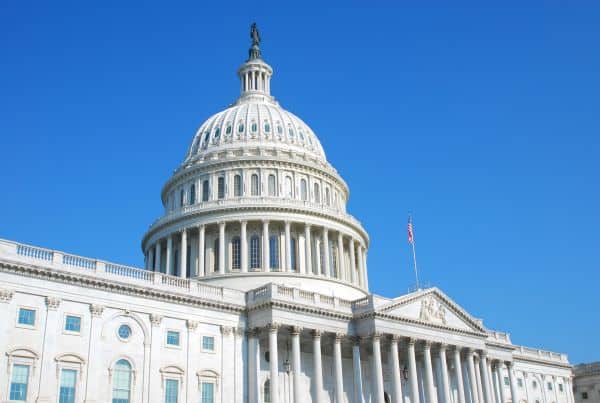
President Trump has frequently emphasized his intention to remove burdensome regulations that weigh on manufacturers and other businesses. In his first day on the job, he took steps to set this rollback in motion. Here’s what manufacturers need to know.
Regulatory freeze: As most presidents do when they take office, President Trump imposed a freeze on new and in-process regulations.
- The freeze pauses any rules from the outgoing Biden administration that have been proposed but not finalized, finalized but not sent to the Federal Register or sent to the Federal Register but not published.
- The executive order also recommends that agencies delay the effective dates of any published-but-not-yet-effective Biden rules by at least 60 days, giving the administration time to decide whether to rescind or revise the rules.
Reinstating policies: President Trump also rescinded several of President Biden’s executive orders, reinstating policies that had been in place during Trump’s first term.
- Most prominently, President Trump undid President Biden’s rescission of his “one-in-two-out” policy, setting the stage for more reworked and repealed regulations than new rules in his second term.
- He also rescinded a Biden order that had reduced agencies’ obligations to seek public input on guidance documents, which agencies use to interpret regulations and give direction to regulated parties.
Establishing DOGE: President Trump also established the Department of Government Efficiency, which will “be dedicated to advancing the president’s 18-month DOGE agenda,” including modernizing technology and software, increasing efficiency and reducing the size of government.
- DOGE will play a role in implementing the president’s new hiring freeze: the new organization will have 90 days to work with the Office of Management and Budget and the Office of Personnel Management on a plan to reduce the size of the federal government’s workforce while the hiring freeze is ongoing.
The NAM says: “The regulatory burden facing manufacturers is sapping growth, costing the U.S. economy more than $3 trillion annually, with manufacturers shouldering $350 billion in annual regulatory costs. Small manufacturers—the backbone of our supply chain—are especially hard hit, with costs exceeding $50,000 per employee per year, or about $1 million for a 20-person shop,” said NAM Managing Vice President of Policy Chris Netram.
- “The NAM has already provided the new administration with more than three dozen regulatory actions to ease the regulatory burden on our industry.”
- “The NAM looks forward to working with the Administration to right-size the regulatory burden, providing smart, tailored rules that ensure the United States remains the best place in the world to build and create, fueling economic growth and strengthening our global competitiveness.”
